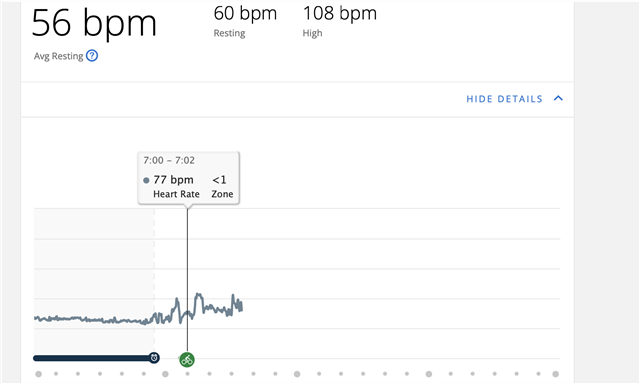It's not the first time it happens, but since I noticed it every time during the indoor cycling, I have a question regarding the balance Garmin decided between battery life and oHR accuracy. If I use my Tacx connected to my H10 strap and my computer Tax Training app during an indoor cycling session without starting explicitly a workout on my Fenix 7X, the values captured by the watch are so much different from reality .. like the F7X is displaying (and storing for later reference in Connect) values of 50-65bpm whereas the H10 registers (the realistic) values of 130-150 bpm. This is not a limitation of the oHR sensor, as it is capable of measuring accurately the values if you access the HR glance putting the read function in a "more active" state - but for battery conservation reasons (I presume) Garmin decided that if you don't move that much (which is the case with indoor cycling) the sensor won't use "full power" readings .. leading to such low values as you could say that you're sleeping.
At the same time, if I wear my Polar Vantage V2, also not with an activity started .. in it's "default" daily use, the sensor displays values identical or close to the HR strap - which says that Polar is not "throttling" the sensor during the daily reads regardless of your movements.
This behaviour is more obvious during indoor cycling since this activity doesn't involve too much moving your arm, "leading" the Garmin to think that you're not active and therefore throttling the oHR readings - but that leads to other questions: how reliable are all the other functions that depend on your daily regular HR values? Like for example, if the readings are not "real" all the time, but depend on how much you move your arm to suggest some kind of activity, how reliable are the High HR or Low HR alerts? Or energy expenditure?

This is what Garmin displays in the Connect for the period I've performed the indoor cycling session - almost resting. This image shows 2 problems:
1/ the fact that oHR "overwrites" the information from the activity - if you have the activity (synced), why would you consider more "important" the oHR?
2/ the max values - it doesn't matter if the H10 strap registered 160bpm during the activity, the max in Connect (both mobile and web) is the oHR value - 108 bpm.
At the same time, Garmin Connect also displays the activity registered and synced from Tacx, with the real HR values.

Polar, even if it doesn't have an explicit activity during the same period, at least notices the high HR and is very close to what the H10 registered.

So - even if I understand (somehow) Garmin's logic to favor the battery optimisation by throttling the oHR readings, in such cases like this you can't help but wonder how far the optimisation should go? It could create a trust issue and may transform your device from a daily wear into just a specialised sport watch (a very capable one nonetheless).


